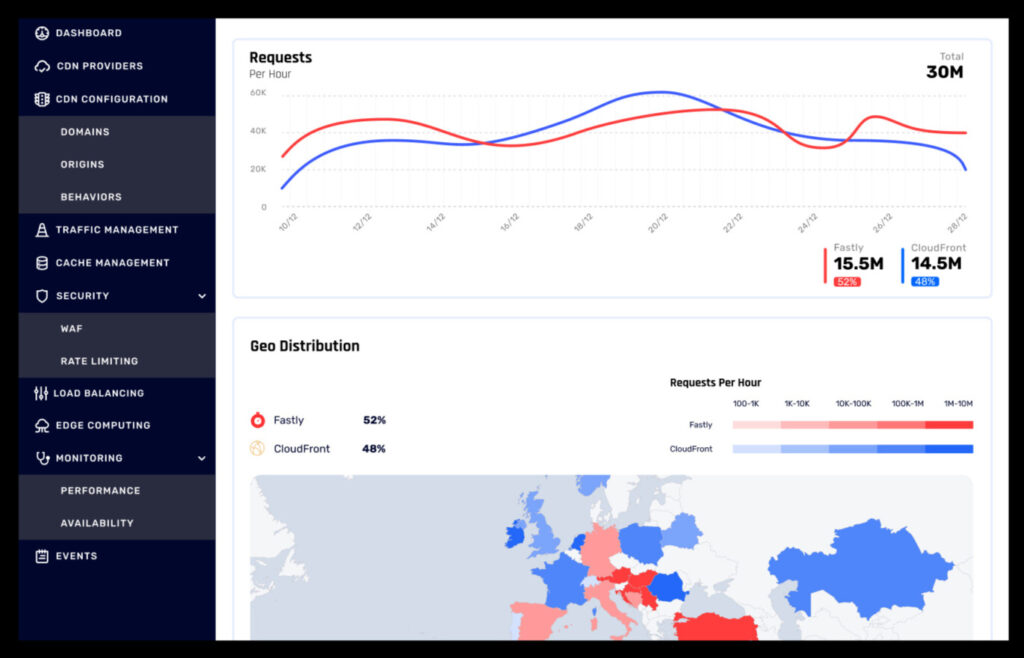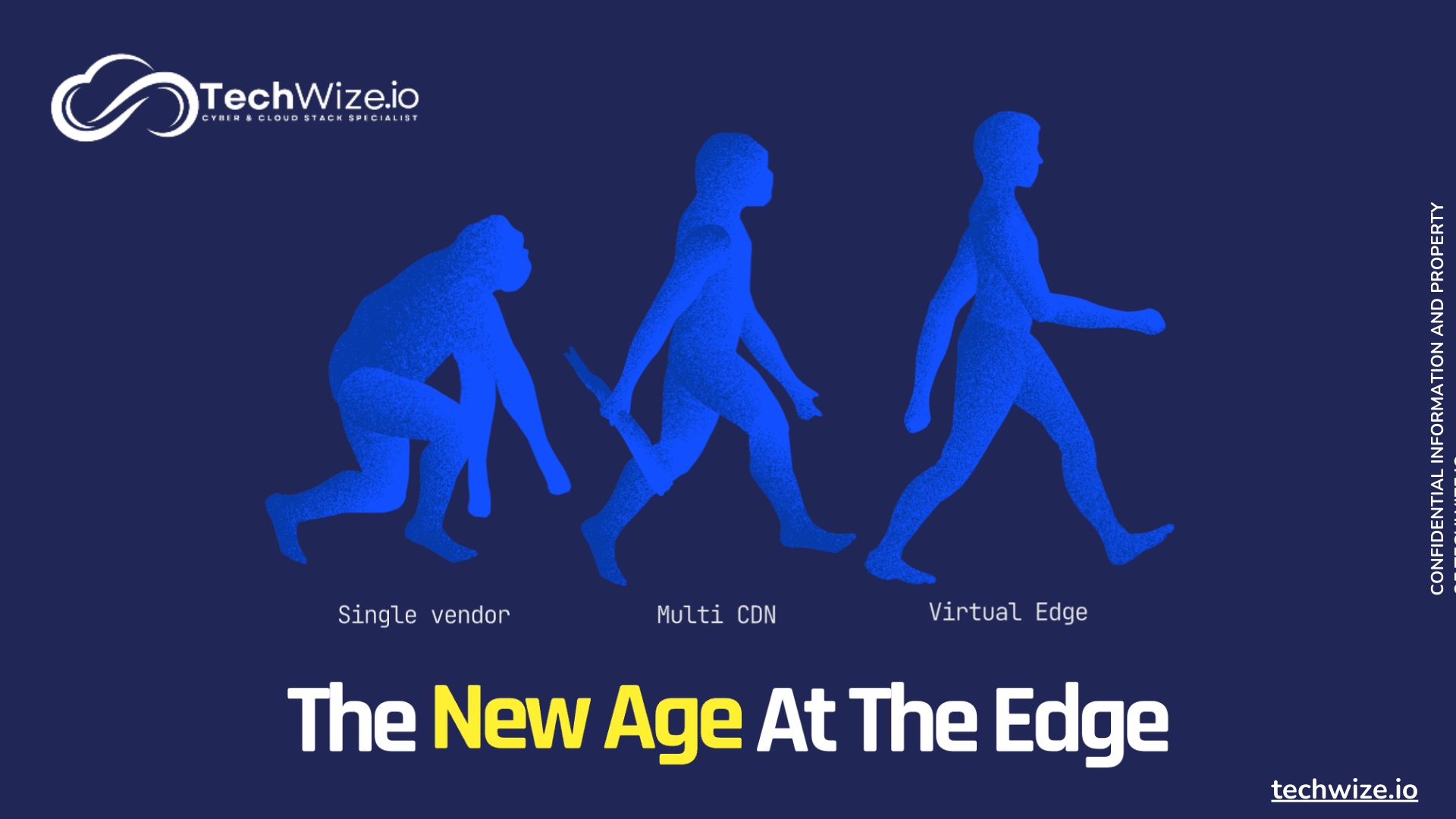Introduction
In a world where consumer expectations are constantly evolving, speed has become essential. Online content delivery is now a key pillar of this revolution. Content Delivery Networks are key players in this revolution, initially designed to efficiently distribute static content (images, videos, script files) to servers scattered around the world. However, with the emergence of new technologies, traditional CDN solutions are facing new challenges. Since the first flat-screen TVs, resolution has progressed from HD Ready to Full HD, then to 4K UHD and even 8K UHD. The Virtual Edge is now on the scene, to meet today’s content management needs and future broadcasting standards.
The Multi-CDN Era: Managing Content Diversity
As the needs of businesses and end-users have evolved, multi-CDNs have emerged as a response to the increasing diversity of content. Unlike traditional CDNs, multi-CDNs enable content to be intelligently distributed across multiple delivery networks, offering greater flexibility and adaptability. This approach ensures optimum availability of content while reducing the risk of downtime. However, managing multiple CDNs is expensive in terms of reliability, integration, performance and efficiency.
The emergence of Virtual Edge: a response to current needs
Faced with these challenges, Virtual Edge is emerging as the 2.0 solution for multi-CDNs. The aim is to offer a premium service at a reduced cost. This is made possible by the way content is managed and distributed with an appropriate Load Balancer. This technology guarantees 99.999% availability and reduces your costs by 40%.
It enables centralised management of static traffic, as with any Multi-CDN, and also of dynamic traffic, which is the strength of Virtual Edge.
Simplifying Multi-CDN Management with Virtual Edge
One of the key features of Virtual Edge is its centralised and simplified approach to multi-CDN management. Instead of juggling multiple interfaces and providers, reduce stress and manage all your CDNs from a single platform, reducing operational complexity and associated costs.
To take things a step further, the Virtual Edge can manage all your TerraForm architectures. It centralises your code in one place, simplifying your management process. The Virtual Edge takes care of everything.

To guarantee maximum content availability and Dynamic Traffic Redirection, the Virtual Edge enables content to be distributed across different CDNs. It takes into account location, type of traffic and time of day. This feature guarantees seamless service continuity, even in the event of a provider failure. Thanks to this increased resilience, you can maintain the satisfaction of your users and achieve a superior SLA.

Flexibility and enhanced security: the benefits of Virtual Edge
By adopting a multi-CDN approach with Virtual Edge, you benefit from increased flexibility to meet changing market needs. What’s more, Virtual Edge is a commitment to 99.999% available and secure traffic. It deploys a full range of security features (WAF, bot detection, etc.) and traffic control (Load Balancer, Rate Limiting), guaranteeing robust protection against threats.
There’s no longer any question of contracting with an additional CDN provider. Everything is aggregated and automated at lower cost, for delivery performance that is at least equal to, or better than, TACE.

Conclusion
The Virtual Edge is the future of online content management, offering a complete solution to meet the current and future challenges of CDNs. By adopting the Virtual Edge, you can guarantee the availability, security and performance of your online content, while remaining flexible and agile.

